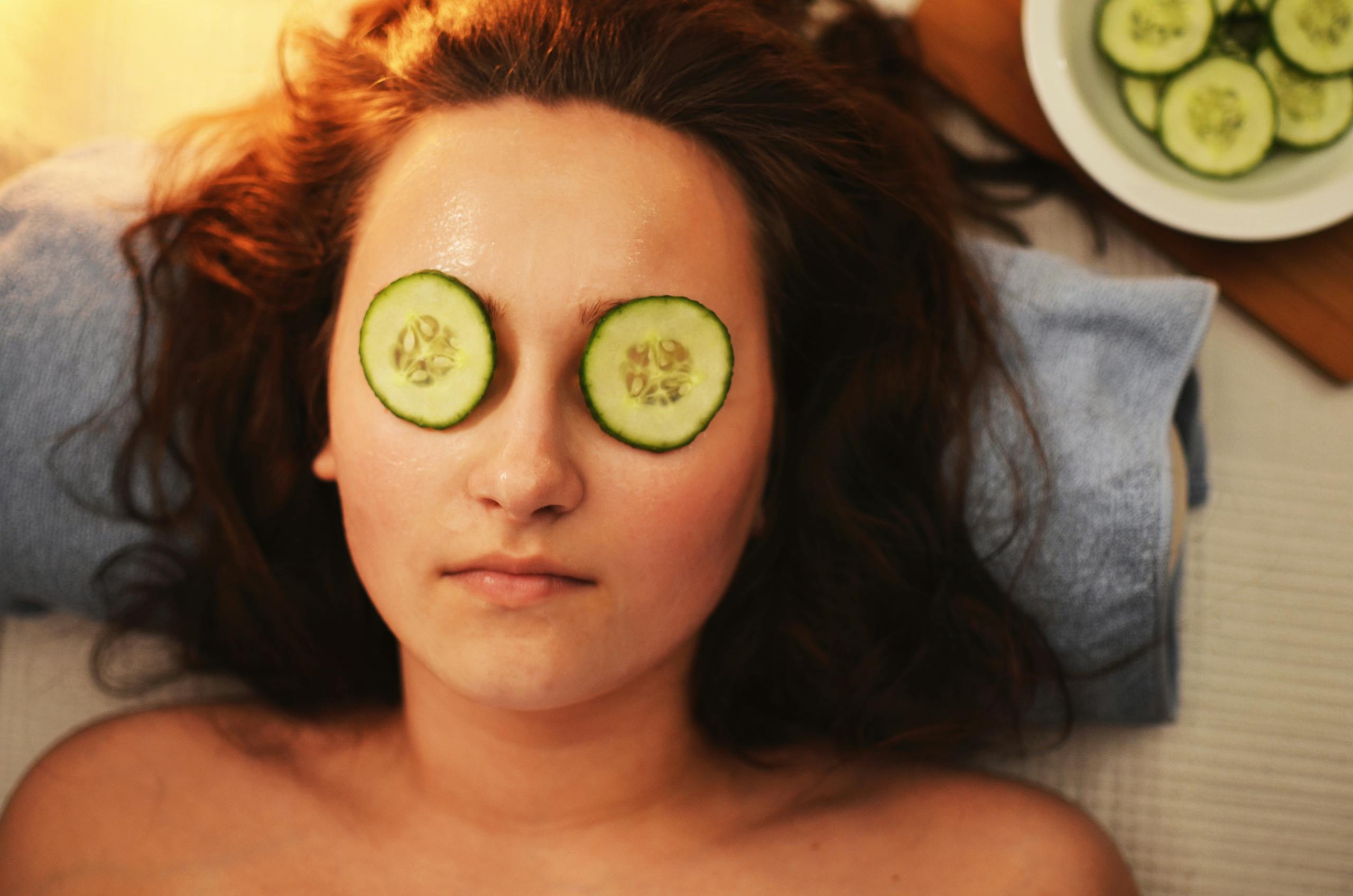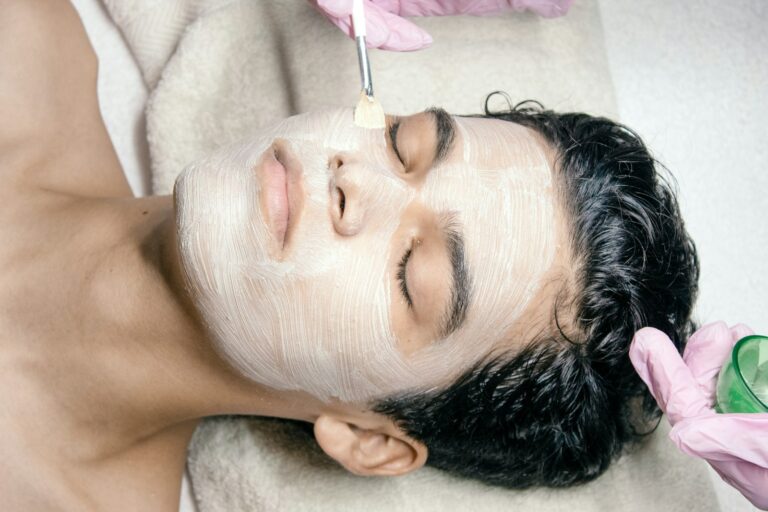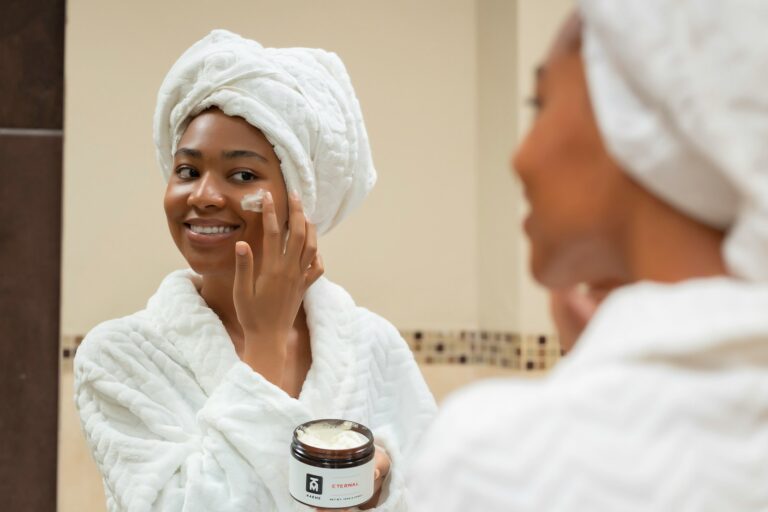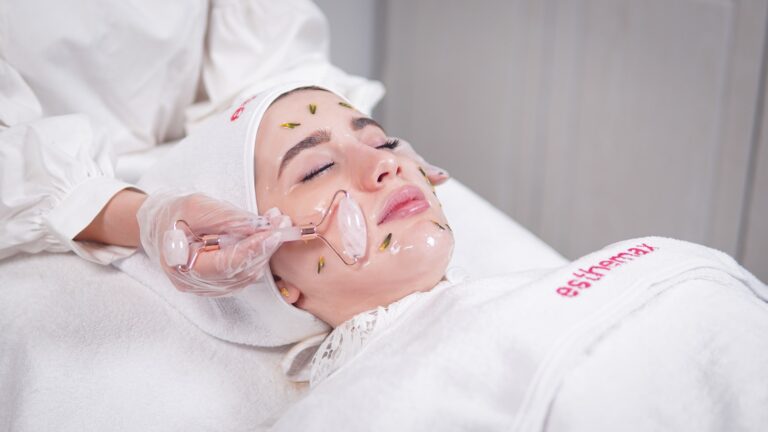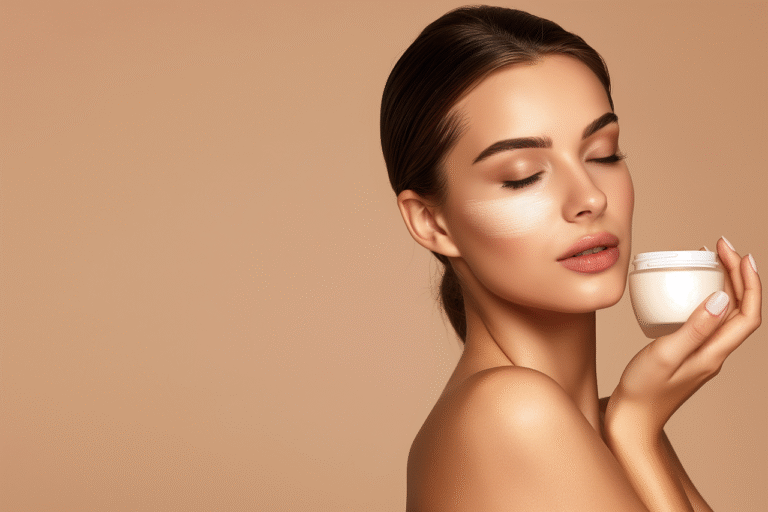Over time, understanding the difference between your AM and PM skincare routines can significantly elevate your skin health. Each regimen serves a distinct purpose, tailored to cater to your skin’s needs throughout the day and night. In this post, you’ll discover what products to apply when, the benefits they bring, and why adhering to these routines can enhance your overall complexion and radiance. Let’s examine the effective strategies that will help you maximize your skincare results.
The Science of Skin: Understanding Circadian Rhythms
How Your Skin Reacts Throughout the Day
Throughout the day, your skin undergoes various changes that align with its natural circadian rhythms. These internal biological clocks regulate numerous processes, influencing cell turnover rates, moisture levels, and even how your skin responds to environmental aggressors. For instance, during the daytime, your skin is at its peak for protection. The production of sebum increases to guard against moisture loss, while antioxidants naturally boost to fend off the effects of UV radiation and pollution. In contrast, as night falls, your skin shifts into repair mode, focusing on regeneration and recovery, repairing damage accumulated over the day. This dual phase of activity emphasizes the benefits of tailoring your skincare routine to sync with these natural transitions.
Observations show that while you sleep, the skin renews itself, leading to about a 30% increase in cell turnover. This is crucial for maintaining a vibrant, youthful complexion. With increased blood flow during sleep, nutrients are more effectively delivered to skin cells, resulting in a fresh and rested appearance by morning. This understanding helps you realize why adopting specific skincare strategies can enhance your skin’s natural functionality, ensuring you reap the full benefits during both day and night.
The Role of Light and Darkness in Skin Function
Light and darkness significantly influence your skin’s behavior, impacting everything from hydration to overall tone. During daylight hours, exposure to natural light triggers the production of vitamin D, crucial for skin health and immune function. Sunlight also stimulates melanocyte activity, which can lead to temporary tanning as a protective response to UV exposure. In contrast, at night, melatonin levels rise in darkness, enhancing skin repair mechanisms. This powerful hormone promotes cellular regeneration, ensuring that skin can effectively combat the signs of aging and recover from daily stressors.
The interplay of light and darkness extends to how your skin absorbs products. Research indicates that certain active ingredients, like retinoids, are more effective at night when the skin is less exposed to the elements and more engaged in repair processes. Therefore, you may find that your nighttime regimen not only helps repair damage but can also increase the effectiveness of these potent ingredients, leading to better skin outcomes.
Moreover, fluctuations in light also affect the skin’s barrier function. At night, the decrease in light supports a more stable state for hydration and moisture retention, whereas constant exposure to artificial light during the day poses a challenge for maintaining skin health. Adjusting your skincare routine based on these light cycles can enhance the benefits of your products, boosting their results and ensuring your skin remains in its optimal state.
Morning Skincare Rituals: Setting the Stage for the Day
Your morning skincare routine serves as a foundation for the day ahead, prioritizing hydration, protection, and a radiant complexion. Starting your day with the right products ensures that your skin remains balanced and prepared to face external stressors such as pollution and UV rays. A well-crafted morning regimen not only enhances your natural glow but also sets a positive tone for the day. By choosing functional ingredients tailored to your skin type, you can effectively combat various issues, from dryness to premature aging, propelling you toward your skincare goals.
Key Ingredients for Daytime Protection
In the morning, focus on incorporating antioxidants, humectants, and emollients into your skincare routine. Ingredients such as vitamin C serve a dual purpose: they brighten your complexion while providing protection against environmental aggressors. Other potent antioxidants, like green tea extract and niacinamide, not only help neutralize free radicals but also enhance your skin’s barrier function. Adding a hydrating element with ingredients like hyaluronic acid can provide your skin with the moisture it craves, creating a supple base for further products.
Don’t overlook the necessity of properly chosen emollients as well. These ingredients soothe and soften your skin, preventing trans-epidermal water loss. For instance, products containing squalane or jojoba oil can create a protective shield that locks in hydration without making your skin feel heavy or greasy. The combination of these key ingredients plays a vital role in ensuring your skin remains vibrant and healthy throughout the day.
The Importance of Sunscreen and UV Shields
Sunscreen is non-negotiable in any morning skincare routine due to its role in preventing skin damage and reducing the risk of skin cancer. A broad-spectrum sunscreen with an SPF of 30 or higher should be a key player in your regimen. Not only does it shield against damaging UVA and UVB rays, but consistent use also helps prevent signs of aging, such as fine lines, wrinkles, and dark spots. Chemical filters like avobenzone and octisalate, or mineral filters like zinc oxide and titanium dioxide, create a barrier between your skin and harmful rays, making them important components of your daily skincare strategy.
Research indicates that up to 90% of visible skin aging is attributed to sun exposure, making daily sunscreen application imperative for maintaining youthful skin. Incorporating sunscreen into your morning routine isn’t just about sun protection; it’s about fostering long-term skin health and preserving your skin’s integrity against external aggressors. Even on cloudy days or when you’re spending most of your time indoors, UV rays can still penetrate windows, emphasizing the need for consistent use of UV protection.
The Nighttime Rejuvenation Process: Repair and Restore
Ingredients Best Suited for Nighttime Use
Your nighttime skincare routine should focus on ingredients that work in harmony with your skin’s natural regeneration processes. Retinol is a powerful derivative of vitamin A that promotes cell turnover and encourages collagen production. It’s particularly effective for reducing signs of aging and improving skin texture. Additionally, hyaluronic acid is invaluable during the nighttime hours; it attracts moisture to your skin, ensuring that you wake up with a plump and hydrated complexion. Peptides also hold strong potential for nighttime formulations, as they stimulate healing and enhance your skin’s resilience.
Other notable contenders for your evening regimen include vitamin C and niacinamide. While vitamin C is often associated with daytime use for its antioxidant properties and sun protection, using a stable formula at night allows it to repair free radical damage accumulated during the day. Niacinamide contributes to an even skin tone and helps reduce inflammation, supporting your skin’s barrier function as you sleep. Incorporating these ingredients into your end-of-day ritual will foster an environment of repair and restoration.
The Role of Sleep and Skin Repair Mechanisms
During the hours of sleep, your body naturally transitions into a state of repair and renewal. As your skin enters its nightly cycle, cellular repair mechanisms become more active, vastly improving your body’s ability to recover from environmental aggressors and daily stressors. Studies show that in this restorative phase, skin cell turnover can increase, enhancing your overall complexion and allowing scars and blemishes to gradually fade away.
In a state of deep sleep, your body also produces higher levels of growth hormone and melatonin, both of which play pivotal roles in skin rejuvenation. Growth hormone accelerates tissue growth and repair, while melatonin is known for its antioxidant properties, combating oxidative stress that could hinder healing. Prioritizing quality sleep together with a well-formulated nighttime skincare routine sets the stage for optimal skin repair.
Seasonal Considerations: Adjusting Your Routine Year-Round
Seasonal Changes and Their Impact on Skin
As the seasons shift, your skin does not remain static; it reacts to environmental changes, often requiring adjustments in your skincare routine. In winter, for instance, the air tends to become dryer and colder, which can lead to increased moisture loss from your skin, resulting in tightness or flaky patches. In contrast, summer brings warmer temperatures and elevated humidity levels, which can contribute to excess oil production, breakouts, and clogged pores. Paying attention to these seasonal changes ensures your skin remains balanced and healthy throughout the year.
Different seasons may also bring about unique concerns for specific skin types. For example, individuals with oily skin might find summer breakouts more frequent due to sweat and humidity, while those with dry skin may feel exacerbated sensitivity during the harsh winter months. Recognizing how your skin responds to various climates is necessary in adjusting your skincare regimen to maintain its best condition across the calendar.
Tailoring AM and PM Routines for Different Climates
Adjusting your AM and PM routines based on climate can significantly enhance the effectiveness of your skincare products. In humid climates, a lighter serum or gel moisturizer can prevent the feeling of heaviness on the skin, while in drier conditions, opting for a thicker cream at night helps retain moisture while you sleep. During summer months, you might focus more on oil-free products and lightweight sunscreens to avoid clogging pores, whereas winter calls for richer formulations to battle the drying effects of indoor heating and cold winds.
In tropical climates, consider incorporating products containing hydrating ingredients like hyaluronic acid or glycerin into your AM routine, ensuring your skin remains plump and refreshed. For areas with colder weather, investing in a nourishing night cream loaded with antioxidants and necessary fatty acids will support skin repair during the night. Small tweaks, such as layering a hydrating essence or using a mild exfoliant more frequently in summer, can also lead to noticeable improvements and adaptability in your skincare approach.
Age-Defying Strategies: Modifying AM vs. PM Regimens by Skin Type
Skin Types and Tailored Approaches
Your skincare regimen should adapt based on your specific skin type, especially when considering both AM and PM routines. Oily skin, for example, can benefit from lightweight, oil-free products in the morning to keep shine at bay throughout the day. Incorporating ingredients like salicylic acid helps control excess sebum and prevent breakouts. In contrast, if you have dry skin, an emphasis on hydrators such as hyaluronic acid or glycerin in your AM routine can create a moisture barrier that lasts through the day.
Tailoring your PM regimen is equally important. For those with sensitive skin, soothing ingredients like aloe vera or niacinamide in the evening can assist in repairing the skin’s barrier overnight. On the other hand, if you have combination skin, a balanced approach using a mixture of moisturizers and exfoliants will help to address different areas of your skin effectively. Any routine should be customized to meet these unique needs.
| Skin Type | Recommended Ingredients |
|---|---|
| Oily | Salicylic acid, oil-free moisturizers |
| Dry | Hyaluronic acid, glycerin |
| Sensitive | Aloe vera, niacinamide |
| Combination | Exfoliants, targeted moisturizers |
| Aging | Retinoids, peptides |
Age-Specific Ingredients to Incorporate
Incorporating age-specific ingredients enhances your skincare routine significantly as your skin matures. For individuals in their 20s, focus on nourishing antioxidants like vitamin C, which helps fend off environmental damage. As you enter your 30s, introduce factors such as retinoids to stimulate collagen production and promote cell turnover, addressing the first signs of aging. Progressing into your 40s and beyond, a heavier emphasis on peptides and rich moisturizers can add the needed hydration while promoting elasticity.
Each decade introduces its unique challenges and needs for your skin. By understanding these shifts, you can fine-tune your regimen to incorporate the right elements. The 50s and beyond may warrant a reliance on deeply hydrating creams that contain ingredients like ceramides alongside anti-aging compounds. Any well-informed approach to skincare should not just address concerns but also celebrate each stage of life’s journey.
Common Missteps: What You Might Be Getting Wrong
Myths Surrounding AM and PM Skincare
You might have heard that a single product can work effectively at any time of day, but this is misleading. Each formula is designed to cater to specific needs that vary based on the time of application. For instance, products rich in retinol or exfoliating acids are best reserved for nighttime use. Using them during the day can make your skin more susceptible to sunlight, potentially leading to irritation or damage. Additionally, you may find it tempting to use your entire routine both morning and night, but this could hinder the benefits of certain active ingredients that need time to interact with your skin.
Another common myth is that your skin doesn’t need hydration during the day if you’ve applied an effective moisturizer at night. Skipping daytime hydration leaves the skin vulnerable to environmental stressors like UV rays and pollution, which can aggravate dryness or excess oil production. Your skin’s needs evolve throughout the day, and committing to a streamlined AM and PM routine can maximize your glow and overall health.
The Dangers of Overlapping Ingredients
Layering too many products containing active ingredients can cause unwanted reactions. For example, combining potent ingredients like vitamin C and retinol in the same routine can lead to irritation or breakouts, as both can be highly effective but also potentially harsh when layered. Striking a balance between your daytime and nighttime routines requires understanding how ingredients interact. Keeping your AM regimen focused on protection, such as antioxidants and sunblocks, and your PM routine centered on repair and rejuvenation can safeguard your skin from the negative effects of ingredient overlap.
It’s imperative to pay attention to the percentage of active ingredients in different products. Sometimes, using a higher concentration during one part of the day, paired with a lower concentration at another, can lead to excessive irritation. Always observe how your skin reacts and adjust the frequency or combination of products accordingly. If in doubt, consulting with a skincare professional can provide you with a tailored approach to avoid these pitfalls and achieve the best results.
Future Trends: The Evolution of Skincare Routines
Personalized Skincare Solutions
Increasingly sophisticated technology is enabling more personalized skincare solutions tailored specifically to your unique skin type and concerns. Companies are leveraging artificial intelligence and machine learning to analyze factors such as your skin type, environmental conditions, and lifestyle choices. For example, brands like Proven Skincare offer customized formulations based on a comprehensive quiz that evaluates your individual skincare needs, including climate, skin conditions, and even geographic location. This personalization leads to targeted results, as products are designed with your specific requirements in mind.
Moreover, at-home diagnostics are becoming more commonplace, with devices capable of measuring hydration levels, oil production, and even skin pH. These insights allow you to adjust your routine dynamically. For instance, should you track increased dryness in winter, you can quickly pivot to heavier moisturizers or hydrating serums, ensuring your skin receives the optimal care it needs throughout the year.
Innovations Shaping Tomorrow’s AM and PM Products
Innovative ingredients and formulations are revolutionizing skincare, making AM and PM routines more effective than ever. Recently, biotech-derived ingredients have gained traction, promising more sustainable and potent solutions. These innovations can include everything from lab-grown hyaluronic acid to plant-based retinoids, which are not only effective but also kinder to your skin. Some skincare brands are even collaborating with tech companies to create products infused with probiotic strains that restore balance to your skin’s microbiome, showcasing a holistic approach to skincare.
As you consider your AM and PM routines, anticipate further advancements in texture and absorption technologies. For example, microencapsulation techniques allow active ingredients to be delivered more efficiently and effectively. Imagine a lightweight serum that releases its beneficial compounds gradually throughout the day or night, providing continuous rejuvenation. As these innovations evolve, they’ll enhance the overall user experience, making applying products not only effective but also enjoyable.
The market is leaning toward waterless formulas and refillable packaging, in response to growing concerns about sustainability. These innovations aim to reduce environmental impact while maintaining product effectiveness. Companies are committing to transparency by detailing ingredient sourcing, which allows consumers to make informed choices aligning with their values. This shift reflects a broader movement toward conscious skincare, emphasizing efficacy without sacrificing the health of the planet.
To wrap up
On the whole, understanding the distinction between AM and PM skincare routines empowers you to optimize your skin health effectively. In the morning, your focus should be on protection and hydration, incorporating products that shield your skin from environmental stressors like UV rays and pollution. Your AM routine typically includes a gentle cleanser, toner, moisturizers, and sunscreen—ingredients designed to enhance your skin’s barrier and keep it looking radiant throughout the day.
Conversely, your evening routine provides a prime opportunity for repair and rejuvenation. This is the time to incorporate active ingredients such as retinoids or exfoliating acids that work to promote cellular turnover while you sleep. By employing a tailored PM routine that allows the skin to recover, you maximize the benefits of your skincare products, helping to achieve a healthier, more vibrant complexion. By respecting these routines, you can make the most of your skincare regimen and nurture your skin to its fullest potential.

